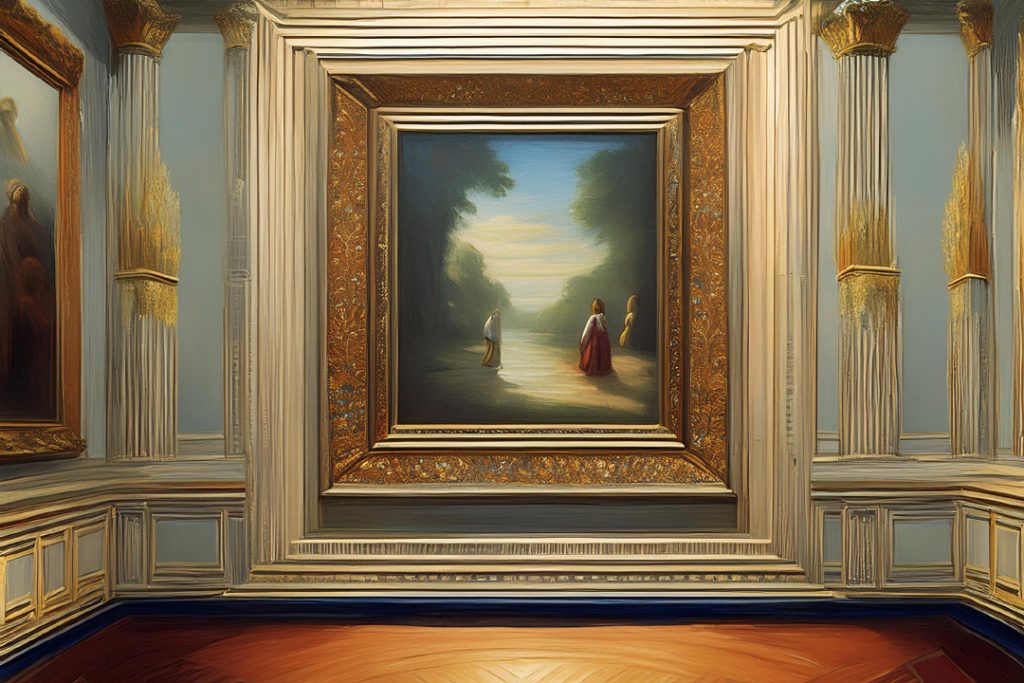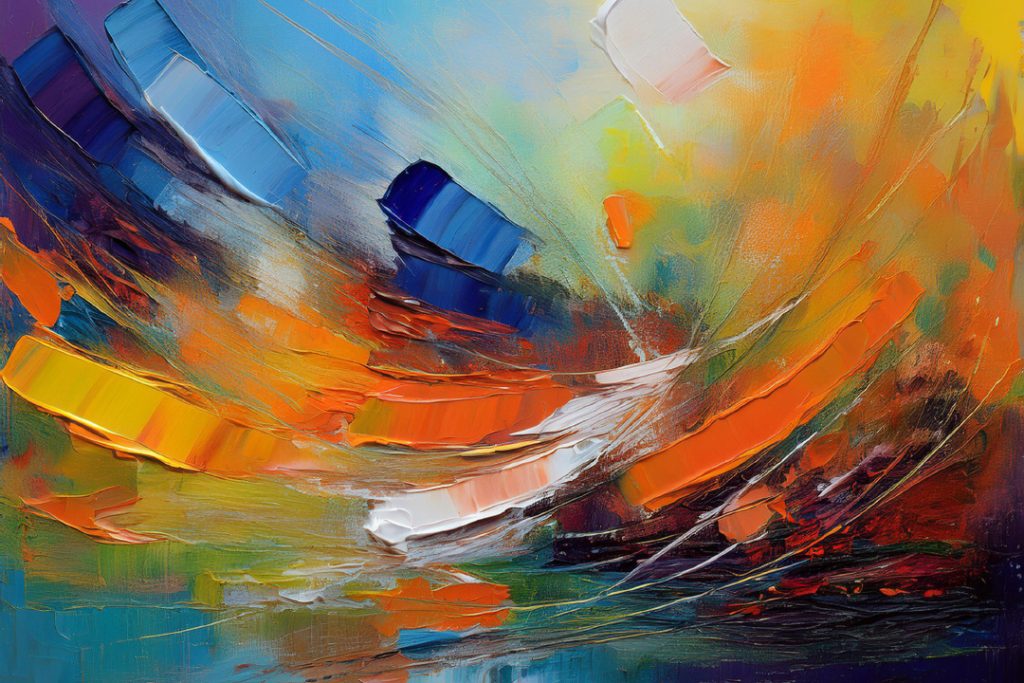PAINTING TECHNIQUES FOR BEGINNERS
Beginner Painting Tips
Starting your painting journey is like mixing excitement with a dash of the unknown. Let’s cut the complexity and focus on some must-know tips to get you rolling with oil painting.
Must-Have Supplies for Oil Painting
Kickstarting your painting adventure requires the right gear. Here’s your starter pack. Forget the fancy stuff, here’s what you actually need:
- Oil paint set (8 basic colors to mix everything you need)
- Canvas panels
- Oil paint brushes
- Linseed oil (or another medium)
Nice extras:
- Easel
- Palette
- Palette saver
- Painting knives
Having these essentials will help you keep things organized and make your painting sessions more enjoyable, allowing you to focus on getting those colors just right.
Picking Paints Without the Pain
Choosing your paints wisely sets the stage for great art. Don’t overcomplicate it—grab a starter set that covers the basics. Here’s a quick lowdown:
| Paint Type | Cleanup Method | Ideal For |
|---|---|---|
| Traditional Oils | Solvents needed | Beginners okay with solvents |
| Water-Mixable Oils | Water cleanup | Clean freaks avoiding solvents |
Stick to primary colors (red, blue, yellow), add in some secondary colors, plus white and black. Skip the bargain-bin brands; you want decent pigments to get those vibrant colors.
Brushes: The Unsung Heroes
Different brushes can transform your painting from “meh” to “wow”. Start with these basics:
- Flat Brushes: Great for bold strokes and big areas
- Round Brushes: Perfect for fine details
- Filbert Brushes: Good all-rounder for details and broader strokes
- Fan Brushes: Awesome for blending and fun textures like leaves
| Brush Type | Best For |
|---|---|
| Flat | Bold strokes, big areas |
| Round | Fine lines, details |
| Filbert | Versatility in strokes |
| Fan | Blending, textures |
Buy brushes labeled “oil paint brushes”. They’re tougher and can handle the thicker paint. Clean them well after each session to keep them lasting longer.
Dive Deep into Art
Got your tools? Great! Now, broaden your horizons. Check out topics like famous paintings in history and abstract art movement history to appreciate the art world more deeply.
Painting can be a wild ride, but with the right start, it can turn into a joyful, colorful experience. Happy painting!
Rookie Slip-Ups
Starting out with painting can be quite an adventure! It’s easy to stumble over some common hurdles, but learning to dodge these blunders can level up your art in no time.
Mastering Light and Shadow
One of the most baffling areas for newbies is figuring out light and shadow. To nail that realistic look in your paintings, you really need to get these down pat. As pointed out on Evolve Artist, it’s crucial to keep light and shadow values distinct. No blending them all into a mush! A good practice is to stick to a couple of light values and a couple of shadow values to make things more obvious.
Light and Shadow Cheat-Sheet
| Value Type | Description |
|---|---|
| Light Values | Highlight, Mid-tone light |
| Shadow Values | Core shadow, Cast shadow |
Picking the Right Subjects
Another trap beginners fall into is choosing subjects that are way too complicated for their current skill set. It’s super tempting to go for grand, intricate scenes, but starting simple can be a game-changer (Evolve Artist). Picking easy subjects lets you finish your pieces successfully and helps you build up the basic skills without ingraining bad habits.
Good beginner subjects:
- Fruits like apples or oranges
- Straightforward landscapes
- Basic geometric shapes
For more ideas, check out famous paintings in history that offer simpler compositions perfect for learners.
Nailing Color Mixing
One thing most novices skip over is the art of color mixing. Many dive in with colors straight from the tube, but experimenting with mixing can give you a deeper grasp on hues and tones (Evolve Artist).
Color mixing drills:
- Make a color wheel with primary colors (red, blue, yellow)
- Blend secondary and tertiary colors to see their range
- Try painting gradients to get the hang of color transitions
Here’s a handy table for your color mixing exercises:
| Primary Colors | Mixed Colors | Result |
|---|---|---|
| Red + Blue | 1:1 | Purple |
| Blue + Yellow | 1:1 | Green |
| Red + Yellow | 1:1 | Orange |
Figuring out these basics can seriously boost your painting chops. Always embrace new techniques and find inspiration by diving into abstract art movement history and mixed media art techniques to broaden your creative horizons.
Acrylic Painting Essentials
Ready to splash some color on your canvas? If you’re a newbie excited about trying your hand with acrylic paints, having the right gear is essential. Let’s look at what you need to get started.
Acrylic Paint Supplies
First things first: the paint. For those just getting their feet wet, you can snag affordable options at places like Walmart or craft stores. Some solid brands to start with include Deco Art, Michael’s CraftSmart, and Apple Barrel. These paints work great for beginners, with prices starting as low as $0.50 per bottle. While you don’t need fancy finishes right away, mixing colors can help you explore a rainbow of shades.
However, as you get more serious, you’ll want to step up your paint game. Economy or kids’ paints often result in weak colors and flimsy finishes. Look for student-grade or artist-grade paints instead; they offer rich, smooth coverage and dry quickly.
| Paint Brand | Price Range (per bottle) |
|---|---|
| Deco Art | $0.50 – $1 |
| Michael’s CraftSmart | $0.50 – $1 |
| Apple Barrel | $0.60 – $1 |
Brush Selection Tips
Let’s talk brushes. The right brush can make all the difference in your painting journey. Go for synthetic bristles, often labeled as “taklon,” because natural hair bristles just don’t hold paint as well. You don’t need to drain your wallet; affordable brush sets do the job perfectly.
Key supplies for acrylic painting include a variety of brushes, canvas or canvas board, a palette, a palette knife, a water cup, scrap paper, and paper towels. Choosing smooth-bristle synthetic brushes will make your painting experience way more enjoyable. Trust me, the right tools make painting a lot more fun.
Canvas Choices for Acrylics
Now, about canvases. You don’t have to shell out a lot of cash if you’re just getting started. Multipacks from stores like Hobby Lobby or Michaels—or even online—usually come primed and ready to go. Recommended sizes for newcomers are 11″x14″ and 16″x20″.
Whether you go for budget canvas boards or stretched canvases, make sure they’re suitable for acrylic paints. And hey, when you’re ready to dive into the world of abstract art, check out our article on the abstract art movement history for some inspiration!
So there you have it—everything you need to start your acrylic painting adventure. Grab your supplies and let your creativity flow!
Acrylic Painting Techniques
Jump into the fun world of acrylic painting and see how different techniques can really make your artwork pop. Here are three cool methods to get you started.
Watercolor Vibes with Acrylics
Ever want that smooth, dreamy watercolor look but using acrylics? Easy-peasy. Just add some water to your acrylic paint, and you’re good to go! It’s perfect for creating shadows and textures on paper that drinks up the paint. But hey, if you’re painting on canvas that’s already primed, go easy on the water to avoid those pesky drips.
What You Need:
- Acrylic Paints
- Water
- Absorbent Paper or Canvas
Steps to Nail the Watercolor Effect:
- Mix your acrylic paint with water until it’s nice and thin.
- Gently brush the paint onto absorbent paper.
- Layer more washes for added depth and texture.
For funky, abstract vibes, check out our abstract art movement history.
Adding Texture with Stippling
Stippling’s like painting but with tiny dots—super fun and addictive. It can make your drawings pop with highlights or unique patterns. More pressure means bigger dots, so mix it up for cool textures and depth.

What You Need:
- Acrylic Paints
- Different Sized Brushes
- Canvas or Paper
How to Rock the Stippling Technique:
- Dip just the tip of your brush into the paint.
- Lightly tap the brush onto your canvas to form small dots.
- Press harder for bigger dots.
- Keep layering dots to add that juicy texture and depth.
Want more texture ideas? Dive into our mixed media art techniques.
Cool Dripping and Pouring Effects
Dripping and pouring paint is like having a mini art party—including the mess, but way more fun. Use this to create vibrant backgrounds or random splashes that get people talking. Think rain or melting ice cream!
What You Need:
- Acrylic Paints
- Spray Bottle with Water
- Clear Acrylic Medium
- Big Canvas
Steps to Create Drippy, Pouring Awesomeness:
- Slather on some thick paint layers.
- Spritz with water to make it run and drip.
- Pour on clear acrylic medium to get colors flowing.
- Tilt and move the canvas to guide the paint wherever you want.
For some inspo, check out these famous paintings in history that played with similar techniques.
Get your brushes ready and dive into these fun acrylic techniques. You’ll be amazed at what you can create!
Precision in Acrylic Painting
Acrylic painting can be a blast for beginners and offers loads of fun techniques to nail down precision and amazing effects. Let’s take a look at using painter’s tape for sharp lines, playing with layers using dry brushing, and why paint mediums are game-changers.
Clean Lines with Painter’s Tape
Want those crisp, clean lines? Painter’s tape is your new best friend. Perfect for geometric patterns, snazzy architectural elements, or any focused design, painter’s tape keeps areas paint-free to give you sharp, clear lines.
Here’s how you make it work wonders:
- Make sure your canvas is dry even before thinking about the tape.
- Press the tape down good and firm to keep sneaky paint from seeping under.
- Paint your heart out around the taped sections.
- Be patient and let the paint dry completely before peeling off the tape for that wow-worthy reveal.
Distinct Layers with Dry Brushing
Dry brushing introduces texture and dimension to your painting. This technique requires using a dry brush with just a smidge of paint to create light, scratchy strokes on a bone-dry canvas. It’s awesome for showing off textures like wood grain or rocky surfaces.
Nail this technique with these steps:
- Grab a stiff-bristle brush and dip it lightly in paint.
- Dab off any excess—less is more here.
- Use light, sweeping strokes in the spots where you want a textured look.
Importance of Paint Mediums
Paint mediums are little magic potions that tweak your acrylic paint in various ways, like changing consistency, drying time, and finish. Knowing how these mediums work can really step up your painting game.
Here’s a rundown of common acrylic paint mediums:
- Gel Mediums: Make your paint thicker, great for creating heavy textures.
- Flow Improvers: Help paint flow better, perfect for smooth, even strokes.
- Retarders: Slow the drying process, giving you more time to blend and detail.
Here’s a quick-look table for different mediums:
| Medium Type | Purpose | Ideal For |
|---|---|---|
| Gel Medium | Increases thickness | Heavy textures, 3D effects |
| Flow Improver | Enhances flow | Smooth applications, fine details |
| Retarder | Slows drying time | Blending, extended work time |
For more on mixed media techniques that often include these mediums, check out our mixed media art techniques.
Master these methods, and you’ll see a significant boost in your acrylic painting precision and creativity.
Why Acrylic Paints Rock for Artists
Hey there! If you’re on the hunt for the perfect paint to splash your creativity onto the canvas, acrylic paints might just be your new best friend. Here’s why they’re an all-time favorite among both greenhorns and seasoned pros:
Dries in a Flash
One of the coolest things about acrylic paint? It dries faster than your grandma’s cookies. Because they’re water-based, you can slap on new layers without twiddling your thumbs. Thin coats dry in under an hour, and even thicker ones are good to go by bedtime. Unlike oil paints that take forever (at least a whole day) to dry, acrylics are the go-to choice for anyone looking to wrap up their masterpiece ASAP (Painting to Gogh).
Oops-Proof Painting
Ever mess up a painting and wish you could hit undo? With acrylics, you pretty much can. Made a mistake? No biggie. Just add a new layer and keep going. Try that with watercolors and you’ll end up with a soggy mess. Oil paints? You’ll be waiting days to redo anything. This “forgiveness factor” lets you get wild and crazy, knowing you can cover up any goofs (Painting to Gogh).
Pick the Right Stuff
When it comes to acrylic paints, not all tubes are made equal. Going for quality means richer, more vibrant hues that’ll make your artwork pop. Here’s what you wanna look out for:
| Factor | Why It Matters |
|---|---|
| Pigment Quality | More pigment equals more vibrant and lasting colors. |
| Consistency | Thicker paint gives better coverage and texture. |
| Lightfastness | Keeps your colors fresh, even when they’re under the spotlight. |
| Brand Reputation | Stick with trusted names for reliable, top-notch paint. |
For the lowdown on picking the best acrylic paints and other neat tips, check out our guide on mixed media art techniques.
Get Your Creative Juice Flowing
Whether you’re just dipping your toes into the art world or you’ve been painting for years, acrylics are a dream come true. They let you play with different methods, experiment fearlessly, and create art that’s truly you. Feeling stuck? How about some inspo from the most famous paintings in history?
Get out those brushes and start painting your next masterpiece!
Here are some free online resources to help you learn painting techniques for beginners:
- Ctrl+Paint
This site is great for learning the basics of digital painting. It offers free tutorials that break down complex topics into manageable lessons. You can also find premium content for a deeper dive into the subject.
Visit Ctrl+Paint - Mark Crilley YouTube Channel
Mark Crilley is a popular YouTuber who teaches various art techniques, including manga, anime, and traditional drawing methods. His step-by-step tutorials are great for beginners.
Watch Mark Crilley on YouTube - Pamela Groppe Art
Pamela Groppe provides beginner-friendly tutorials for acrylic painting. Her lessons are simple and budget-friendly, covering topics like painting flowers, birds, and seascapes.
Visit Pamela Groppe Art - Online Art Lessons
This platform offers various free and paid lessons on acrylic, oil, and pastel painting. It’s a versatile site with many styles and one-on-one sessions for more personalized learning.
Explore Online Art Lessons - The Virtual Instructor
A resource for those who prefer learning directly from a real instructor, this site offers live and recorded lessons in various art forms, including painting and drawing techniques.
Visit The Virtual Instructor
These resources provide a good starting point to explore various painting techniques at your own pace.
Here some recommended links selected for you: The Best Books of the Month, Todays best Deals at Amazon, Best Sellers in Cell Phones & Accessories and last but not least the easy and great way to send a gift for the holidays: Amazon.com eGift Card (Instant Email or Text Delivery).




